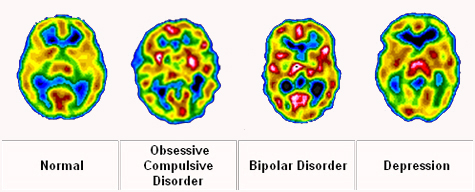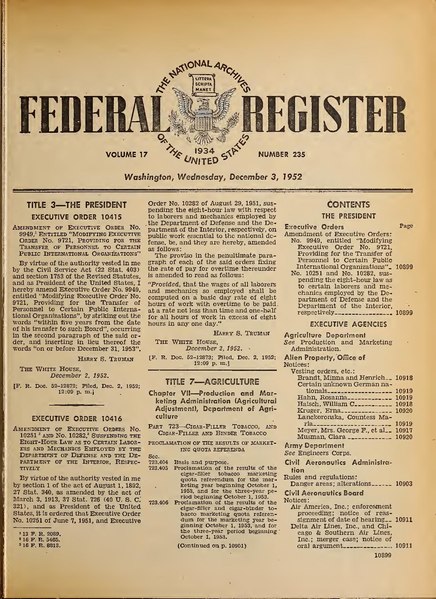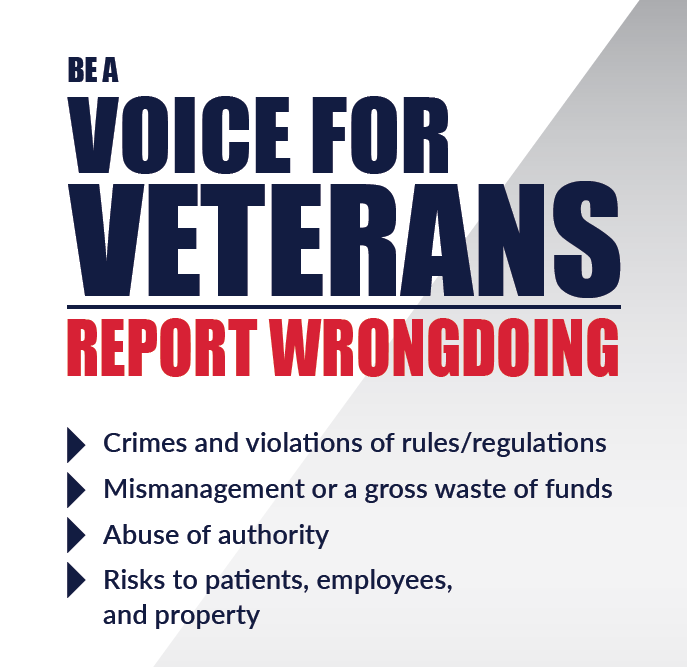- Home
- Federal Policies for Veterans
- Mental Health Ratings
VA Mental Health Ratings
VA mental health ratings will change in 2022 or 2023 as announced in the Federal Register on 15 March 2022.a
SUMMARY
In my comment to the proposed rule, I wrote:
I commend the Department of Veterans Affairs for this conceptual improvement to the disability rating criteria for mental disorders. Unfortunately, two serious problems remain.
I explain the serious problems in this 12-page PDF document:
Proposed Change to VA Mental Health Ratings - Comment (revised comment, written on 3 Apr 2022, not uploaded to Regulations.gov yet)
Or scroll down to see the HTML (online) version of my revised comment, below.
To download my original comment on the proposed VA mental ratings (8 Mar 2022), go to:
https://www.regulations.gov/comment/VA-2022-VBA-0010-0585
VA Mental Health Ratings: Proposed Rule Published in the Federal Register

In the Federal Register announcement, the Department of Veterans Affairs published a proposed rule to update the VA Schedule for Rating Disabilities (VASRD), which includes the General Rating Formula for Mental Disorders.
U.S. law requires that federal agencies notify the public when they plan to make substantive changes to current federal regulations (rules).b,c
5 U.S.C. § 553 states in part:
(b) General notice of proposed rule making shall be published in the Federal Register ... the notice shall include—
(1) a statement of the time, place, and nature of public rule making proceedings;
(2) reference to the legal authority under which the rule is proposed; and
(3) either the terms or substance of the proposed rule or a description of the subjects and issues involved.
Footnotes

a. Mental Disorders, 87 Fed. Reg. 8498 (proposed Feb. 15, 2022) (to be codified at 38 C.F.R. § 4.126 and § 4.130).
b. 5 U.S.C. § 553
c. Learn more about the rule-making process in this well-written guide published by the Federal Register: A Guide to the Rulemaking Process (PDF).
image by Paget Michael Creelman | License: CC BY-SA 4.0 → attribution required
Comment on AQ82 Proposed Rule Schedule for Rating Disabilities: Mental Disorders
My comment on the proposed change to VA mental health ratings is: Comment ID: VA-2022-VBA-0010-0585 (clicking that link takes you my original [8 Mar 2022] comment on Regulations.gov)
Alternatively, you may wish to download my revised comment about the proposed VA mental ratings changes, written on 3 Apr 2022 (not yet uploaded to Regulations.gov)
Proposed Change to VA Mental Health Ratings - Comment (3 Apr 2022)
Or simply read my (revised) comment below.
VA Mental Health Ratings: Comment on Proposed Rule Change
My original comment on the proposed change to the VA mental health ratings was submitted on 8 Mar 2022 | Comment ID: VA-2022-VBA-0010-0585 | The comment below is the revised version of 3 Apr 2022 (not submitted to Regulations.gov yet).
Note: The version below does not match exactly to the PDF - it's a little rough as it's a challenge converting a Word document to HTML. Although the free online program, HTML-5-Editor, definitely helps.
Comment on Proposed Rule Change to VA Mental Health Ratings Criteria
I offer the following comment regarding the Department of Veterans Affairs (VA) Proposed Rule to amend VA mental health ratings, including revising the General Rating Formula for Mental Disorders.[1]
I commend the Department of Veterans Affairs for this conceptual improvement to the VA mental health ratings. Instead of assigning disability ratings based on a list of representative symptoms that purportedly align with functional impairment, this new approach does not assume that certain symptoms cause a specified level of impairment, but instead relies on individualized assessment.
The proposed rule is more concordant with Congress’ intent to create an indemnity program (as opposed to an entitlement program)[2],[3] for disabled veterans.[4],[5]
Better aligning the VA mental health ratings criteria with contemporary psychological and medical science and comporting the regulation more closely with Congress’ intent are notable improvements. Unfortunately, two serious problems remain.
The Serious Problems
The steps taken to improve scientific accuracy and to align the VA mental health ratings more closely with Congress’ intent are incomplete.
First, while the proposed rating formula references contemporary psychological and medical science, this scientific foundation applies to the adjudication process only; it neglects to apply principles of evidence-based psychological and psychiatric assessment to compensation and pension examinations (C&P exams). Given the importance of exam findings to VBA adjudications, this omission undercuts the agency’s effort to align the mental disorder disability claim process with modern medicine.
Second, whereas the relevant statute requires that VA base disability ratings on “reductions in earning capacity,”[6] the proposed rule bases the 10% and 30% disability ratings on no more than slight difficulties in one or more aspects of a measured domain that do not interfere with tasks, activities, or relationships. VA blithely ignores this obvious contradiction in their rating formula.
Similarly, as a result of ambiguous language and unsupported assertions, VA counts non-occupational impairment—difficulties that lack a clear nexus with reductions in earning capacity—when calculating mental disorder disability ratings.[7]
There are instances where VA can probably advance a scientifically sound argument that impairment in non-occupational interpersonal functioning is associated with occupational impairment and therefore should be considered when rating veterans’ mental disorder disabilities. However, VA should explain this connection in plain language with citations to social science evidence.[8]
Overarching recommendation: Square the rule with contemporary science and the law.[9]
Specific Problems
- One –
Specific problem #1: In the three sentences below, the adverb “generally”[10] undermines the statement’s authority.[11] (Each sentence below is followed by a question that highlights the ambiguous nature of the statement.)
The levels of intensity for each domain will be none, mild, moderate, severe, or total, generally defined as follows ...[12]
→ In which instances should examiners or adjudicators redefine mild, moderate, severe, or total?
... examiners and VA adjudicators generally should assess impairments with a view toward their effect on earning capacity.[13]
→ Under what circumstances should examiners and adjudicators assess impairments with a view toward their effect on non-occupational functioning?
VA adjudicators generally should assess impairments due to the service-connected disability, not other causes.[14]
→ In which instances should adjudicators assess impairments due to the service-connected disability and other causes?
Recommendation #1: Remove “generally” from those three sentences. Consider the statements without the word “generally” to appreciate the significant changes in meaning:
The levels of intensity for each domain will be none, mild, moderate, severe, or total, defined as follows.
Examiners and VA adjudicators should assess impairments with a view toward their effect on earning capacity.
VA adjudicators should assess impairments due to the service-connected disability, not other causes.
- Two -
Specific problem #2: The phrase “clinically significant” in the definition of moderate impairment lacks a clear meaning.[15]
When an adverb modifies an adjective it should sharpen the adjective’s meaning. Consequently, we should ask what does “clinically” mean in this context, i.e., as applied to “significant”?
The American Heritage Dictionary of the English Language provides four meanings for “clinically”:
- Of, relating to, or connected with a clinic.
- Involving or based on direct observation of a patient.
- Objective and devoid of emotion; coolly analytical.
- Suggestive of a medical clinic; austere and antiseptic: a clinical style of decor.[16] (examples and quotations omitted)
The Oxford English Dictionary offers a similar, albeit more concise explanation:
In a clinical manner; by observations made at a patient's bedside; in clinical language or practice.[17]
Thus, we might ask:
- Does “clinically significant” mean significant for a clinic? Unfortunately, that use of the word “clinically” would require further explication to make sense.
- Does “clinically significant” mean “significance as determined by direct observation of a [veteran]”? If examiners or field workers directly observed veterans at work or when performing job-related tasks, then the phrase would be meaningful. But since such observations are not currently part of the examination and adjudication process, we cannot define the phrase in that way.
- Does “clinically” have a unique meaning in clinical language or practice? I am not aware of a definition of “clinically” that is exclusive to clinical language or practice. And I could not discern a unique meaning for the word in relevant medical and psychological literature.
I therefore conclude that “clinically” adds nothing to “significant”. It does not clarify, sharpen, or elucidate. Thus, “clinically significant” is one of those phrases that sounds meaningful but is not.[18]
However, there is one definition of “clinically” found in a well-respected lexicon that would meaningfully modify “significant”:
clinically, adverb – in a clinical manner.[19]
clinical, adjective – … 4. d. applying objective or standardized methods (as interviews and personality or intelligence tests) to the description, evaluation, and modification of human behavior.[20]
Recommendation #2: Thus, if VA were to adopt that meaning (“applying objective or standardized methods”), the agency could illuminate this otherwise muzzy phrase (“clinically significant”) with a clear, precise definition like this:
Clinically significant means that mental disorder symptoms adversely affect a veteran’s functioning in an important, noteworthy, or consequential manner, as determined by standardized methods.
Note: In that suggested definition, I sought to avoid redundancy by drawing on the Oxford English Dictionary’s definition for “significant”.[21]
VA has historically been reluctant to require standardized, evidence-based assessment methods during compensation and pension examinations, e.g., VA recommends the CAPS for PTSD exams but does not require it (and most examiners do not use it).[22] I hope that VA will apply its scientific approach to the rating formula to examinations as well.
- Three -
Specific problem #3: VA indicates that “a veteran’s earning capacity after disability is highly dependent upon both occupational and social functioning.”[23]
However, VA does not cite any evidence in support of this assertion.
Recommendation #3: If social science evidence exists demonstrating that social functioning impairment is highly correlated with occupational functioning impairment, then I encourage VA to cite such evidence in support of the revised rating formula.
- Four -
Specific problem #4: The proposed rule defines mild impairment as slight difficulties in one or more aspects of a domain that do not interfere with tasks, activities, or relationships.[24] This definition contains an obvious contradiction, namely that slight difficulties that do not interfere with tasks, activities, or relationships do not, by definition, interfere with one’s ability to work. Thus, for the 30% level in particular, the proposed rating formula states:
If you have a service-connected mental disorder with slight symptoms that do not impair your earning capacity, we deem that your mental disorder impairs your earning capacity by 30%.
Recommendation #4: Resolve the contradiction by establishing logical relationships in the VA mental health ratings. For example:
|
Level of impairment |
Number of affected domains |
Disability rating |
|
1 (mild) |
in two or more domains |
10 |
|
2 (moderate) |
in one domain |
30 |
|
2 (moderate) |
in two or more domains |
50 |
|
3 (severe) |
in one domain |
70 |
|
3 (severe) |
in two or more domains |
100 |
|
4 (total) |
in one domain |
100 |
There must be at least some impairment to cause a 10% loss in average earning capacity. The VA mental health ratings outlined in my revised table reflects such a logical relationship. My recommended table also avoids the erroneous conclusion that slight impairment that does not interfere with tasks, activities, or relationships somehow reduces a veterans average earning capacity by 30%.
Sidebar
The explanation for the automatic 10% rating for any service-connected mental disorder that does not cause any occupational impairment relies on DSM-5’s mental disorder definition. Here is how VA explains it in the Federal Register notice.[25]
… a disorder that meets the DSM-5 requirements for being a mental disorder must include elements indicative of both harm and dysfunction.[26] Thus, a DSM–5 disorder will rarely produce zero dysfunction.[27] Because the DSM–5 requirements represent thresholds of minimal clinical confidence that a dysfunction is present, VA will assign at least a 10 percent rating for such disorders.[28] (Bluepages citation format changed to Whitepages for consistency).[i]
However, VA confuses the DSM-5 meaning of “dysfunction” with “functional impairment”. In the article VA cites,[29] the authors explain DSM-5’s two-prong definition of mental disorder: (1) internal dysfunction (failure of a biologically designed function),[ii] and (2) significant distress or social role impairment.[30] Most importantly, the DSM-5 mental disorder definition does not require social or occupational impairment. Diagnostic criteria can be satisfied by significant distress alone. Thus, while DSM-5 diagnostic criteria presume internal dysfunction, they do not presume social or occupational impairment.
VA does not need to resolve this discrepancy if they adopt my Recommendation #4.
- Five -
Specific problem #5: Incorrect grammar, usage, or punctuation, and imprecise language that makes comprehension more difficult.
Specific instance: The following sentence exhibits all of those flaws.
Thus, we believe that, in order to accurately measure functional impairment, VA must consider the frequency and severity of the symptoms and how they impact functioning and performance across a variety of domains: That, is aspects of human behavior and functioning.[31],[iii]
Recommendation #5a: Change the sentence as follows:
Thus, in order to accurately measure work-related impairment, VA must consider symptom frequency and severity and their impact on performance across a variety of domains involved in occupational functioning.
Recommendation #5b: Hire a professional copy editor and proofreader to review drafts of the final rule.
- Six -
Specific problem #6: Below the revised General Rating Formula for Mental Disorders[32] is this:
Note (2): Include any ameliorating effects of medications when evaluating the extent of disability under the General Rating Formula in this section.
I understand that VA included this rating guidance because of relevant case law as cited in the proposed rule. VA also rightly explains that requiring adjudicators to estimate pre-treatment disability severity would contradict well-established law indicating that adjudicators should not make medical decisions.
Recommendation #6: If adjudicators should rate disabilities taking the beneficial impact of treatment into account, then psychological treatment should be considered along with medical treatment (medications). In many instances, psychological therapies demonstrate greater efficacy than medication.[33],[34]
- Seven -
Specific problem #7: The proposed VA mental health ratings, while grounded in scientific evidence to some extent, e.g., the proof-of-concept study[35] does not yet have sufficient empirical evidence to use indefinitely.
Recommendation #7: Include a provision in the final rule that VA will conduct research to determine the extent to which disability ratings derived from the new formula correspond with actual reductions in earning capacity.
- Eight –
Specific Problem #8: VA bases the new rating formula on contemporary medical and psychological science, as explained in the Federal Register notice:[36]
There is evidence that a standardized assessment for disability related to mental disorders, such as the WHODAS 2.0 and CAPS–5, leads to a more reliable and valid disability examination process.[37] The WHODAS 2.0 ‘‘has good psychometric qualities, including good reliability and item-response characteristics’’ and shows concurrent validity when compared with other measures of disability or health status or with clinician ratings.[38] A VA study compared clinical interviews with standardized assessments that incorporated the CAPS–5 for PTSD diagnosis and the WHODAS 2.0 for functional impairment and found that administering a standardized disability assessment resulted in more complete assessment of functional impairment and diagnostic coverage of PTSD.[39]
However, VA does not apply that same scientific evidence, which shows that standardized assessments improve the reliability and validity of examinations, to the exams themselves.
This omission stands in start contrast to VA’s admirable work implementing a nationwide program of evidence-based psychotherapy for PTSD.[40],[41]
Thus, one must ask: If evidence-based psychotherapy is important for veterans seeking mental health treatment, why is evidence-based assessment not important for veterans seeking service-connected disability benefits?[42],[43]
Similarly, why develop a more scientifically sound rating formula while at the same time neglecting to develop a more scientifically sound examination process? VA used to say that since the Veterans Health Administration (VHA) conducted the exams, they were responsible for conducting reliable and valid examinations. But that scenario no longer applies.
The Veterans Benefits Administration has since assumed responsibility for the vast majority of compensation and pension examinations.[44],[45],[46] VBA has a Medical Disability Examination Office with a staff of about 17 full-time employees (or the equivalent), including staff that oversee C&P exam quality.[47],[48]
The proposed rule should require examiners to use reliable and valid assessment methods. Furthermore, the Medical Disability Examination Office should directly assess how examiners evaluate veterans, including how they interact with and communicate with veteran-claimants. Actual observation of C&P exams is important given reports of insensitivity and unprofessionalism by examiners.[49],[50],[51]
Recommendation #8: Require evidence-based assessment methods during C&P exams, along with rigorous quality control, including peer review, of the examination process.
Footnotes
[1] Schedule for Rating Disabilities: Mental Disorders, 87 Fed. Reg. 8498 (proposed Feb. 15, 2022) (to be codified at 38 C.F.R. § 4.126 and § 4.130).
[2] Captain James A. Lovell Federal Health Care Center, U.S. Dep't of Def. & U.S. Dep't of Veterans Aff., Behavioral Health Services Directory 63 (2016), https://www.lovell.fhcc.va.gov/services/Docs/FHCCBehavioralHealthGuide.pdf ("Thus, the VA disability benefits program is an indemnity program, not an entitlement program. An indemnity program is like a life insurance policy, which pays out only if the policy holder dies. In this case, the VA disability program pays out only if the Veteran suffers from a service-connected medical condition that lessens his or her ability to earn a living.").
[3] American Heritage Dictionary of the English Language (5th ed. 2018) [hereinafter, American Heritage Dictionary] https://ahdictionary.com/word/search.html?q=entitlement ("entitlement, n. ... a government program that guarantees and provides benefits to a particular group").
[4] An Act To amend and modify the War Risk Insurance Act, ch. 16, 41 Stat. 371, 373 (1919) ("a schedule of ratings of reductions in earning capacity from specific injuries or combinations of injuries of a permanent nature shall be adopted and applied by the bureau. … the ratings shall be based, as far as practicable, upon the average impairments of earning capacity resulting from such injuries in civil occupations and not upon the impairment in earning capacity in each individual case ...").
[5] Authority for schedule for rating disabilities, 38 U.S.C. § 1155.
[6] Id.
[7] I recognize that veterans advocacy organizations, the Congressional Veterans’ Affairs Committees, and individual members of Congress have pressured VA to award disability benefits based on factors other than occupational impairment. Although this “iron triangle” or “veterans subgovernment” might not exert as much influence compared to previous decades, it remains a potent force. See e.g., Stephen K. Trynosky, Beyond the Iron Triangle: Implications for the Veterans Health Administration in an Uncertain Policy Environment 7, Sch. Advanced Mil. Stud., U.S. Army Command & Gen. Staff Coll., Fort Leavenworth, Kan. (2014).
[8] See infra Specific Problem #3 (p. 6).
[9] As an aside, I am not personally opposed to awarding disability benefits based on other factors, e.g., quality of life, but such a practice would not comport with current law. Congress could change the law if desired.
[10] Webster's Third New International Dictionary of the English Language, Unabridged (Philip B. Gove ed., 1961, rev. 1993, 2002, periodically updated as Merriam-Webster Unabridged) [hereinafter, Webster’s Unabridged], https://unabridged.merriam-webster.com/unabridged/generally ("generally, adverb ... in a reasonably inclusive manner : in disregard of specific instances and with regard to an overall picture".
[11] Webster’s Unabridged, https://unabridged.merriam-webster.com/unabridged/authority (“authority, n. … a conclusive statement”).
[12] 87 Fed. Reg. 8498, 8501.
[13] Id.
[14] 87 Fed. Reg. 8498, 8502.
[15] 87 Fed. Reg. 8498, 8505.
[16] American Heritage Dictionary, https://ahdictionary.com/word/search.html?q=clinically.
[17] Oxford English Dictionary (2nd ed. 1989, rev. 2019), https://www.oed.com/view/Entry/34382.
[18] Cf. Robert L. Spitzer & Jerome C. Wakefield, DSM-IV Diagnostic Criterion for Clinical Significance: Does It Help Solve the False Positives Problem?, 156 Am. J. Psychiatry 1856 (1999). (explaining that the DSM-IV clinical significance criterion [also used in DSM-5] is problematic and has no empirical support).
[19] Webster’s Unabridged, https://unabridged.merriam-webster.com/unabridged/clinically.
[20] Webster’s Unabridged, https://unabridged.merriam-webster.com/unabridged/clinical.
[21] Oxford English Dictionary (3rd ed. 2011, rev. 2021), https://www.oed.com/view/Entry/179569 (“significant, adj. ... sufficiently great or important to be worthy of attention; noteworthy; consequential, influential”).
[22] James C. Jackson et al., Variation in Practices and Attitudes of Clinicians Assessing PTSD-Related Disability Among Veterans, 24 J. Trauma. Stress 609 (2011) (a survey of VA mental health clinicians who conducted disability assessments for PTSD found that only 17% routinely used standardized clinical interviews and less than 1% used standardized assessments of functioning).
[23] 87 Fed. Reg. 8498, 8501.
[24] Id.
[25] 87 Fed. Reg. 8498, 8502.
[26] Michael B. First & Jerome C. Wakefield, Diagnostic Criteria as Dysfunction Indicators: Bridging the Chasm Between the Definition of Mental Disorder and Diagnostic Criteria for Specific Disorders, 58 Can. J. Psychiatry 663, 665 (2013).
[27] Id.
[28] Id. at 668.
[29] First & Wakefield, supra note 26.
[30] See also American Psychiatric Association, Diagnostic and Statistical Manual of Mental Disorders 20–21 (5th ed. 2013).
[31] 87 Fed. Reg. 8498, 8500.
[32] 87 Fed. Reg. 8498, 8504.
[33] Jasmin Merz et al., Comparative Efficacy and Acceptability of Pharmacological, Psychotherapeutic, and Combination Treatments in Adults With Posttraumatic Stress Disorder: A Network Meta-analysis, 76 JAMA Psychiatry 904 (2019).
[34] Management of Posttraumatic Stress Disorder Work Group, Dep't Veterans Aff. & Dep't Def., VA/DoD Clinical Practice Guideline for the Management of Posttraumatic Stress Disorder and Acute Stress Disorder (ver. 3 2017).
[35] 87 Fed. Reg. 8498, 8503.
[36] 87 Fed. Reg. 8498, 8499.
[37] Institute of Medicine, Psychological Testing in the Service of Disability Determination 66 (National Academies Press, 2015), https://doi.org/10.17226/21704.
[38] T. Bedirhan Üstün et al., Developing the World Health Organization Disability Assessment Schedule 2.0, 88 Bull. World Health Org. 815 (2010).
[39] Ted Speroff et al., Compensation and Pension Examination for PTSD, VA Off. Health Services Rsch. & Dev. Serv. Forum 7 (May 2012); see also Theodore Speroff et al., Impact of Evidence‐based Standardized Assessment on the Disability Clinical Interview for Diagnosis of Service‐connected PTSD: a Cluster‐randomized Trial." 25 J. Trauma. Stress 607 (2012).
[40] Bradley E. Karlin and Gerald Cross, From the Laboratory to the Therapy Room: National Dissemination and Implementation of Evidence-based Psychotherapies in the US Department of Veterans Affairs Health Care System, 69 Am. Psychol. 19 (2014).
[41] C. S. Rosen et al., A Review of Studies on the System-Wide Implementation of Evidence-Based Psychotherapies for Posttraumatic Stress Disorder in the Veterans Health Administration, 43 Admin. Pol'y Mental Health & Mental Health Services Rsch. 957 (2016).
[42] John Hunsley & Eric J. Mash, Evidence-Based Assessment, 3 Ann. R. Clin. Psychol. 29 (2007).
[43] Robert F. Bornstein, Evidence-Based Psychological Assessment, 99 J. Pers. Assess. 435 (2017).
[44] Leo Shane III, VA Moving Ahead With Plans to Outsource All Compensation and Pension Exams, Military Times (Nov. 16, 2020), https://www.militarytimes.com/news/pentagon-congress/2020/11/16/va-moving-ahead-with-plans-to-outsource-all-compensation-and-pension-exams/
[45] VA Disability Exams: Better Planning Needed as Use of Contracted Examiners Continues to Grow (GAO-21-444T) at 8, Statement of Elizabeth Curda, Dir., Educ., Workforce & Income Security, Gov’t Acct. Off. (GAO), Testimony Before the Subcomm. Disability Assistance Mem'l Affs., H. Comm. Veterans' Affs., 117th Cong. (Mar. 23, 2021), https://www.gao.gov/products/gao-21-444t ("VBA contractors’ share of the disability exam workload increased each year from about 44 percent in fiscal year 2017 to about 90 percent in fiscal year 2021 [year to date as of Mar. 10, 2021]") [emphasis added].
[46] Off. Enter. Integration, Dep't Veterans Affs., Functional Organization Manual 25 (ver. 6, 2020) ("Compensation Service ... oversees and monitors several multi-million-dollar contracts to provide medical disability examinations in national and international locations; ... collaborates with Veterans Health Administration (VHA) to ensure contract examiner training meet standards determined by Disability Medical Assessment [presumably this refers to the VHA Disability and Medical Assessment Program Office]; monitors the quality of work completed by contract examiners; monitors the status of contract examiner credentials and licensing.") [emphasis added].
[47] Advisory Comm. Disability Compensation, Dep't Veterans Affs., Minutes for December 1-2, 2020 meeting, at 5, https://www.ptsdexams.net/support-files/minutes-acdcdec2020.pdf ("Ms. Glenn [Mary Glenn, Deputy Exec. Dir., Med. Disability Examination Off., VBA] explained that, effective October 1 [2020], Compensation Service’s Medical Disability Examination Program Office was realigned in VBA as a separate organization, the Medical Disability Examination Office (MDEO). The MDEO is comprised of four staff divisions: Data and Operations, MDE Quality, Policy and Program Management, and Acquisitions and Budget.").
[48] Statement of Shane L. Liermann, Deputy Nat'l Legis. Dir. Benefits, Disabled American Veterans at 7 (before the Subcomm. Disability Assistance Mem'l Affs. of the H. Comm. Veterans' Affs., 117th Cong.) (Mar. 23, 2021), https://www.dav.org/wp-content/uploads/Liermann20210323.pdf ("staffing of Medical Disability Examination Office was noted to be at 17 FTEE").
[49] Shane Liermann, Disabled American Veterans, Legislative Director (video timestamps 1:27:17 to 1:27:30), Hearing on Veterans and Sexual Trauma (Nov. 17, 2021) C-SPAN's coverage of Subcomm. Disability Assistance & Memorial Affs. of the H. Comm. Veterans' Affairs, "Supporting Survivors: Assessing VA's Military Sexual Trauma Programs", https://www.c-span.org/video/?516147-1/hearing-veterans-sexual-trauma ("[DAV National Service Officers] shared comments from several MST survivors noting that VA examiners often lack empathy and compassion, and veterans feel re-traumatized by these exams.").
[50] Katie Anita Purswell, American Legion, Rehabilitation Director (video timestamps 1:47:57 to 1:48:13), Hearing on Veterans and Sexual Trauma (Nov. 17, 2021) C-SPAN's coverage of Subcomm. Disability Assistance & Memorial Affs. of the H. Comm. Veterans' Affairs, "Supporting Survivors: Assessing VA's Military Sexual Trauma Programs", https://www.c-span.org/video/?516147-1/hearing-veterans-sexual-trauma ("When I did my PTSD C&P exam, it was with someone in the community, sexual assault was something that was brought up within that, but that person that was in the community was totally void of emotion or empathy for what was happening.")
[51] Examining How the Department of Veterans Affairs Supports Survivors of Military Sexual Trauma, Subcomm. Oversight & Investigation of the H. Comm. Veterans Affs. (Feb. 5, 2020) (statement of Samantha Kubek, Staff Attorney, New York Legal Assistance Group), https://www.congress.gov/116/meeting/house/110426/witnesses/HHRG-116-VR08-Wstate-KubekS-20200205.pdf ("Currently, VA examiners are required to state whether they reviewed the veteran’s electronic file before writing their report. However, they are not required to do so prior to meeting the veteran—if this was required, the doctor could avoid rehashing details that are already stated in the record and that are agonizing to relate.").
Endnotes
[i] See The Bluebook: A Uniform System of Citation, Bluepages – Introduction (Columbia L. Rev. Ass’n et al. eds., 21st ed. 2020), https://www.legalbluebook.com/bluebook/v21/bluepages/introduction
[ii] What is “internal dysfunction”? In Wakefield’s (1992) seminal article upon which the DSM-5 mental disorder definition rests, the author explained, “dysfunction is a scientific term referring to the failure of a mental mechanism to perform a natural function for which it was designed by evolution.”
Similarly, Wakefield (2009) described internal dysfunction as “a failure of a biologically designed function”.
DSM-5’s mental disorder definition describes it like this: “dysfunction in the psychological, biological, or development processes underlying mental functioning”.
American Psychiatric Association, Diagnostic and Statistical Manual of Mental Disorders 20 (5th ed. 2013).
Jerome C. Wakefield, The Concept of Mental Disorder: On the Boundary Between Biological Facts and Social Values, 47 Am. Psych. 373, 374 (1992).
Jerome C. Wakefield, Disability and Diagnosis: Should Role Impairment Be Eliminated From DSM/ICD Diagnostic Criteria?, 8 World Psychiatry 87 (2009).
[iii] With regard to punctuation, note that “… domains: That, is” is incorrect. There are a couple of options to correct the punctuation, such as: “… domains; that is,”. See Bryan A. Garner, Garner's Modern English Usage 903 (4th ed. 2016).

PTSDexams.net is an educational site with no advertising and no affiliate links. Dr. Worthen conducts Independent Psychological Exams (IPE) with veterans, but that information is on his professional practice website.
Subscribe to receive new articles and other updates
What Do You Think?
I value your feedback!
If you would like to comment, ask questions, or offer suggestions about this page, please feel free to do so. Of course, keep it clean and courteous.
You can leave an anonymous comment if you wish—just type a pseudonym in the "Name" field.
If you want to receive an email when someone replies to your comment, click the Google Sign-in icon on the lower right of the comment box to use Google Sign-in. (Your email remains private.)
↓ Please comment below! ↓



